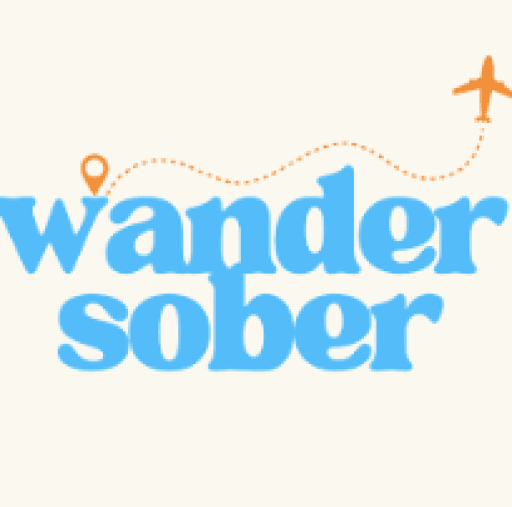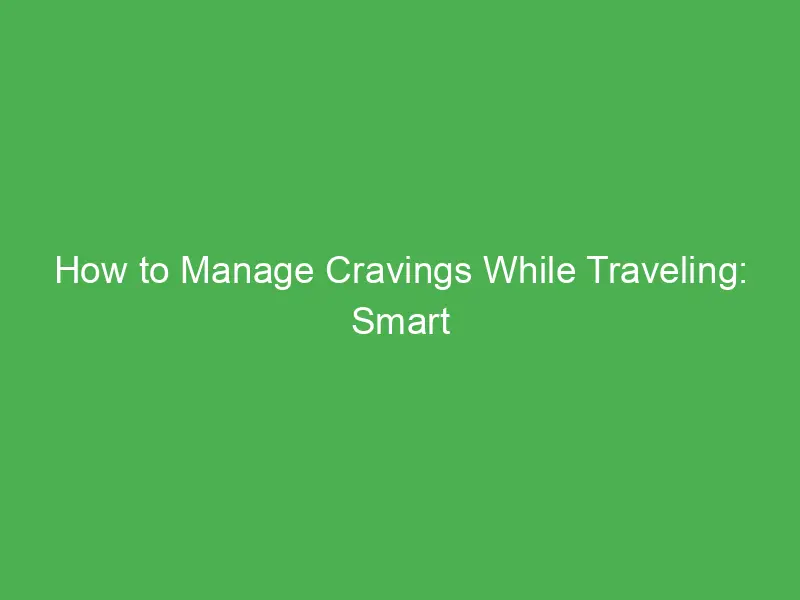Traveling always excites me but I know it can throw my healthy habits off track. When I’m on the road new sights and smells make it tough to resist cravings especially when local treats are everywhere. It’s easy to give in and end up feeling sluggish or guilty later.
I’ve learned that managing cravings while traveling isn’t about strict rules or missing out on fun. It’s about finding balance so I can enjoy the journey and still feel my best. With a few simple strategies I can savor the experience without letting cravings take over.
Understanding Cravings While Traveling
Cravings while traveling often appear when I enter new environments or step outside daily routines. Airports, bustling streets, or hotel buffets introduce unfamiliar sights, smells, and sounds, which can intensify my appetite cues. Novelty and excitement cause higher dopamine activity in the brain, triggering strong desires for high-calorie or sweet foods according to research from the National Institutes of Health.
Stress and disrupted sleep also increase cravings. I notice I reach for snacks more frequently when adjusting to jet lag or managing travel delays. Hormonal changes, such as raised cortisol levels, amplify hunger signals per findings in Psychological Science.
More exposure to limited-time treats or regional specialties creates extra temptation. Local snacks, desserts, and beverages—like Parisian pastries, Japanese mochi, or Italian gelato—become irresistible because of rarity and cultural connection.
Travel schedules often disrupt usual eating times, making it easy for physical hunger to mix with emotional cravings. I recognize this pattern, especially if meals become less regular or portions vary from what I’m used to at home.
Understanding these travel-related triggers helps me identify which cravings align with actual hunger and which arise from shifts in routine, environment, or emotion.
Common Triggers for Cravings on the Road
Disrupted Routines
Frequent changes in my meal schedules, unfamiliar hotel setups, and skipped meals often disrupt my body’s usual hunger cues. Research from the International Journal of Behavioral Nutrition and Physical Activity (2021) notes that schedule interruptions can heighten cravings for calorie-dense snacks.
Stressful Travel Conditions
Tight connections, flight delays, and unfamiliar destinations raise my stress levels. According to the American Psychological Association, stress increases cortisol, which can heighten my desire for high-sugar foods.
Exposure to Local Delicacies
Vibrant street markets, airport bakeries, and hotel buffets surround me with unfamiliar, visually tempting foods. Cornell Food and Brand Lab studies confirm that visual food cues in novel environments significantly elevate my urge to try high-calorie options.
Social Influences
Group tours, family meals, or business events often come with peer pressure to sample specialties or indulge. Johns Hopkins researchers link social atmospheres to higher rates of impulsive eating behaviors during travel.
Sleep Disruptions
Jet lag, different time zones, and uncomfortable accommodations routinely disturb my sleep. Harvard Medical School outlines how sleep loss can increase ghrelin (the hunger hormone), raising my cravings well above normal.
Boredom or Emotional Lows
Long layovers, solo evenings, or homesickness sometimes push me to eat for comfort rather than actual hunger. A 2022 review in Frontiers in Psychology finds that boredom and loneliness during travel are frequent psychological triggers for snack cravings.
Practical Strategies to Manage Cravings
I use targeted strategies to manage cravings when I travel, keeping balance without missing out on unique meals. Practical approaches help me navigate tempting environments while sticking to my health goals.
Mindful Eating Techniques
I use mindful eating techniques to recognize the difference between cravings and real hunger. I slow down and focus on every bite, especially in busy settings like airports or street markets, to reduce impulsive eating (Harvard T.H. Chan School of Public Health). I pause before indulging, checking if I’m truly hungry or responding to sights and smells. I also savor local foods in moderation, appreciating flavors rather than overeating.
Smart Snack Packing
I pack nutrient-dense snacks such as mixed nuts, protein bars, or dried fruit, which curb cravings in transit or between meals. I avoid relying on convenience stores or vending machines, which often stock high-calorie, processed options. I rotate snacks to maintain variety and interest, focusing on items that withstand heat and long travel periods.
Staying Hydrated
I prioritize hydration, as even mild dehydration can trigger food cravings (National Academies of Sciences, Engineering, and Medicine). I keep a refillable water bottle accessible and drink small amounts regularly during flights, sightseeing, or meetings. I watch for cues like dry mouth or low energy that could signal thirst rather than hunger.
Finding Healthy Alternatives
I scout local markets and grocery stores for healthier alternatives, such as fresh fruit, yogurt, and salads. I substitute baked or grilled items for fried street foods or pastries when available. I balance treats by including vegetables and protein-rich foods at meals, reducing the chance of rebound cravings. I check menus in advance, identifying lighter options before entering restaurants.
Coping With Emotional and Stress-Related Cravings
Identifying emotional triggers always forms the foundation for managing travel cravings. I notice patterns like tiredness after long flights, frustration during delays, or loneliness in hotel rooms pushing me to seek comfort foods. Recognizing these feelings as emotional cues, not real hunger, helps me pause before reacting.
Practicing
Choosing mindful distractions directs my attention away from the urge to snack. I bring a book or puzzle to occupy downtime and listen to music playlists that calm my nerves or lift my mood. Focusing on these activities prevents me from reaching for food when emotions peak.
Establishing realistic routines based on my travel schedule provides comfort and structure, even in new cities. I set regular times to eat, get outside for fresh air, and prioritize short moments of relaxation. Consistency in these habits makes it easier to resist the pull of emotional eating.
Seeking social support gives me an outlet when travel stress threatens healthy habits. I text friends or family, share updates in group chats, or join online travel communities to express frustrations. Expressing my challenges helps me regulate emotions and avoid turning to food as a coping method.
Incorporating Local Cuisine Without Overindulging
Sampling regional dishes enhances my travel experience, but I keep portions moderate to avoid overindulgence. Sharing plates at restaurants or food stalls lets me taste signature foods—like tapas in Spain or dim sum in Hong Kong—without consuming large quantities. Ordering samplers or small plates provides variety and satisfies curiosity for new flavors.
Planning my dining around key meals helps control calorie intake while exploring local cuisine. I prioritize trying one or two traditional specialties each day, spacing them apart to prevent excessive snacking. Scheduling meals instead of grazing continually at markets reduces impulse-driven eating.
Pairing high-calorie dishes with lighter options maintains nutrition balance. For example, I add vegetables, fresh fruits, or broth-based soups to offset richer foods such as pastas or fried street snacks. Selecting grilled, steamed, or roasted items over fried choices limits unnecessary fats.
Practicing mindful eating remains essential when enjoying prominent culinary experiences abroad. I pay close attention to flavors and textures, tuning in to feelings of fullness before automatically finishing my plate. Slowing the pace lets me savor unique tastes—like Parisian pastries or Turkish meze—while keeping portions controlled.
Staying aware of alcohol intake further curbs overindulgence. I alternate local wines or spirits with water, especially when sampling regional beverages integral to the local culture. This lowers liquid calorie consumption and minimizes food cravings linked to alcohol.
Recording food experiences in a journal or app helps me reflect on my choices, providing accountability and insight for future travels. Tracking meals reinforces balanced habits without strict restriction, supporting both enjoyment and health while exploring new destinations.
Looking for more sober travel inspiration? Find your next adventure on our Homepage.
Keeping a Balanced Routine While Traveling
Maintaining a balanced routine while traveling helps me manage my cravings and energy levels. I start each day with a consistent wake-up time, even across different time zones, to help my body adjust and maintain its natural rhythm. I plan my meals at regular intervals, scheduling breakfast, lunch, and dinner within set timeframes to stabilize blood sugar and reduce impulsive snacking.
Prioritizing movement keeps my routine anchored. I incorporate at least 20 to 30 minutes of physical activity daily, choosing options like a brisk walk through the city, a short workout in my hotel room, or stretching between scheduled activities. Consistent movement sharpens my focus and minimizes food cravings driven by boredom or fatigue.
Sleep forms another core part of my travel routine. I aim for 7 to 8 hours of rest per night to balance my mood and hormones that regulate hunger. When crossing time zones, I use eye masks and limit screen time before bed to support better sleep quality, even in unfamiliar environments.
Balanced routines also include hydration. I carry a
I consistently pack nutrient-dense snacks, such as mixed nuts, dried fruit, or yogurt, for easy access during long excursions. Predictable snack choices help prevent spur-of-the-moment indulgences at tourist sites or transit stations.
When social obligations or unpredictable schedules threaten my balance, I adjust my routine without abandoning it. I shift meal times by an hour or substitute a planned workout for a sightseeing walk. Adapting to changing circumstances, I maintain structure while still allowing space for unique travel experiences.
Savour Your Trip: Balancing Cravings and Healthy Habits
Traveling always brings new adventures and flavors but it doesn’t have to derail my healthy habits. I’ve learned that managing cravings on the road is about staying mindful and flexible rather than striving for perfection. By tuning into my body’s needs and making conscious choices I can fully enjoy every destination without feeling deprived or overwhelmed. With a little planning and self-awareness I know I can savor the journey and return home feeling energized and satisfied.

Quit drinking on 23 July 2021 after a two-day bender and swapped bars for border crossings and 12-step meetings. Three sober years, 36 countries, 113 travellers (totally dry), fuelled by street food, jelly babies, and a broken Google Maps app. Wandersober is my journal, my SEO lab, and my mission. Featured in GQ, Mirror, Evening Standard, MarketWatch, and more.







